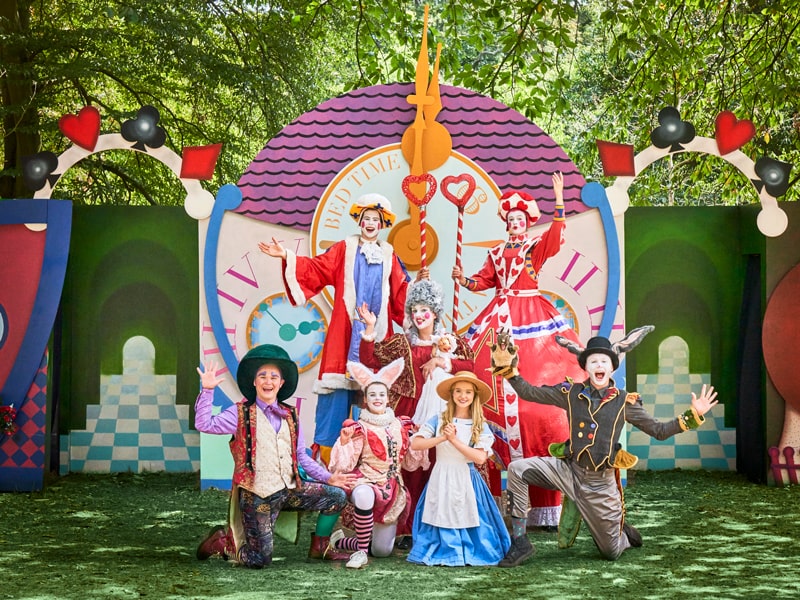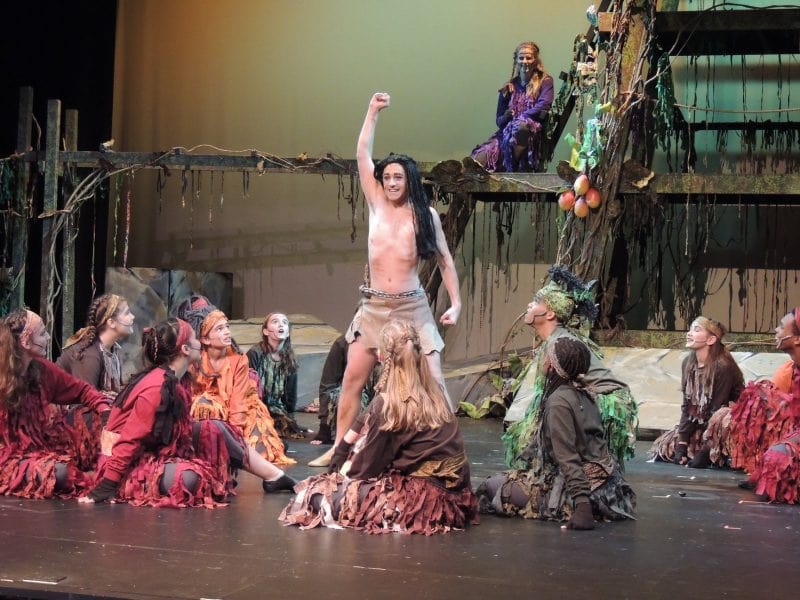
When a play is performed with children, it is common to use scenographic material that is inexpensive, simple to produce and stimulating for both the actors and the audience (generally of the same age) that attends the performance. This helps to dress up the stage, adding colour and textures to create a detailed representation of the spaces where the action takes place.
Several ideas on how to create costumes and sets for children’s theatre
Costumes for children
The easiest way to carry out a performance is to dress the actors in plain colours. Not for nothing do many professional theatre companies use tight black clothing as the only props to dress their actors. However, this option is not the most suitable when performing a play for children, as the costumes help both the actors and the audience to better understand their character.
Some resources for making simple children’s costumes are as follows:
- Acting out animals: if the actors in the play are to be disguised as animals, it is very simple and effective to make rubber masks by cutting out a basic shape for the face (taking the shape of a bean horizontally to save the nose) and then cutting out the eyes. To this base we will add the moustaches, the ears and some different colours to highlight the nose, the mouth or the cheeks. As they are small children, it is advisable not to cover the whole face so that their families can see them while they are performing.
- Representation of ancient texts: when it comes to setting the play in a period prior to ours, the most recurrent thing is to make wide, flouncy skirts for the girls with old fabrics, and cover their shoulders or hair with a handkerchief. For the boys, dark trousers and a shirt with straps or a sash to hold the sword (if there is one) may be useful, although everything varies according to the specific period in which our plot is inspired. When an actor has to play an old person, we can cover his hair with talcum powder sprinkled carefully.

Set for a children’s theatre
To make the set for a children’s theatre we can use different everyday materials depending on the element we want to create
- Background: if the performance is located in a house, we can transmit the sensation of being inside a room by making a window with a cardboard rectangle, adding fabrics collected with a loop to imitate the curtains and using a table with real chairs on stage as the main element of the scenery. The main advantage of this option is that if the centre has projector guns, it will not be necessary to invest in the purchase of fabrics, and this will reduce the total budget of the assembly. Additionally, this option allows us to choose any image, and even draw the background ourselves and project it, increasing the beauty and color quality of the background notably with respect to the use of fabrics.
- Tables and chairs: sometimes, the center has tables and chairs that are no longer used and that can serve us to carry out our representations dressing them with fabrics of different colors. Thus, a deteriorated table can be converted into a luxurious dining table by covering it completely with a tablecloth, and the usual green classroom chairs into their companions by adjusting a fabric with ribbons and placing a cushion on the seat.
- Trees: if the characters in our play are animals, we will highlight the effect of meeting in nature by creating trees with green balloons joined together to make a leafy crown. To give the shape of the glass we can use a wide cardboard or a cork board that is no longer used.
- Stained glass: in interior spaces or if the representation is located in a castle or a church, we can use patent leather paper to cut out geometric figures and stick them together until they form a stained glass window that looks like glass. Furthermore, if we place it in front of a spotlight, it will project against the background or against the floor and transmit the sensation that the sun is entering through the window.
- Recycled materials: sometimes we need an actor to have a bottle, a box, a sword, a patch or other elements that better characterize his character. On these occasions, it is advisable to go to the recycling of everyday materials (containers, shoe boxes, fabrics, rubber bands, paper and cardboard…) and make the objects by drawing them, cutting them out and painting them. With this, we will also be transmitting to the children attitudes of recycling and respect towards the environment, so that we will complement our theatre project with education in values typical of the classroom.
- Continuous paper: finally, with continuous paper it is possible to carry out showy group compositions that act as a background in our children’s theatre or that decorate any place on the stage that we need to cover. To do this, we can place the paper on the floor and ask all the actors to help us draw and colour a picture using pencils, waxes or paints.
In short, to make the costumes and set of a play the main thing is to keep in mind that the space must be beautiful and respectful and stimulating for the actors. We must not fix the point of attention on realism, as the theatre is a figuration where the audience does its part to compose, with its imagination, what is missing from what is being suggested. That is the magic of the show!



